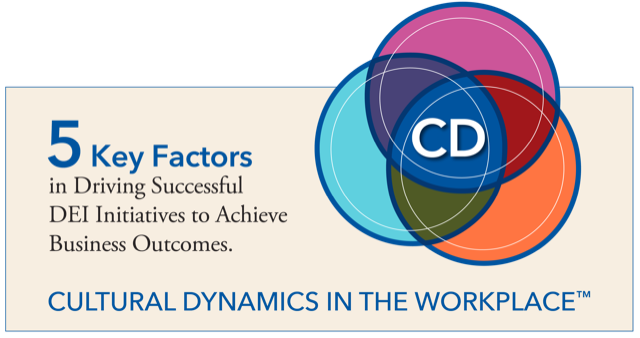
According to a survey by Glassdoor, more than 50% of people think their companies should be doing more to increase workforce diversity.
It all started in 1964, more than 50 years ago, when Congress passed the Civil Rights Act, which prohibits discrimination based on race, color, religion, sex or national origin. The act, of course, applies to employers. Yet after all of the civil unrest we experienced in 2020, how many times did you hear a CEO or spokesperson for an organization say that they are committed to building a diverse and inclusive culture? Probably too many to count.
Why, then, are so many organizations failing to move the needle in-house? From what we've seen, many just can’t seem to figure out how to be more inclusive. Why?
That was the question we posed to our company's Center for Diversity & Inclusion (CDI) when we were trying to identify the root causes that are preventing organizations from making progress toward inclusion.
The answer, in a word, is leadership.
We know this because our CDI’s research identified three barriers to diversity, equity and inclusion (DEI) success, all of which can be attributed to leaders. They are:
- Leaders who are undermining DEI initiatives
- Detrimental attitudes of the leadership majority
- Not elevating DEI to a business initiative
Inclusion starts with changing the mindsets of leaders and addressing the barriers they often create. Without this first step, organizations won’t be successful at moving the needle.
In its When Women Thrive 2020 global report, wealth management firm Mercer noted that 81% of the 1,157 organizations it surveyed were focusing on improving diversity and inclusion, but only 42% had a "documented, multiyear strategy" for doing so.
A 2018 report by professional services network Grant Thornton identified the difference between companies that claimed that diversity initiatives “are important” and those that were actually “taking action." In North America, just over 50% of companies thought it was important, but only 13% were actually doing something to improve diversity.
It's no wonder that we’re still talking about DEI more than 50 years after the Civil Rights Act was passed.
If an organization has any hope of having successful DEI initiatives, you have to manage the mindsets of your leadership. Our CDI’s research dives deeply into each of the three barriers I mentioned above and links them together.
Until leaders stop undermining DEI initiatives because they are “too busy” or think they are a waste of the organization’s time, effort and money, you will never have an inclusive culture.
Until leaders recognize and acknowledge that meritocracy is not always a reality, and stop misconstruing equality and equity, you will never have an inclusive culture.
Until leaders start elevating DEI to a business initiative, with applied expertise, funding/resources, and tracking, you will never have an inclusive culture.
And succeeding with DEI initiatives is a worthwhile goal for companies. Deloitte found that organizations can see an 80% improvement in business performance when levels of diversity and inclusion are high. According to McKinsey & Company, companies in the top quartile for ethnic and cultural diversity are 36% more profitable than those in the fourth quartile. I could go on and on.
So what can leaders do to address the barriers to DEI success that many of them are creating?
- Demonstrate support for DEI initiatives and model inclusive behaviors so the rest of the organization will follow. Leaders set the tone and can drive the culture shift by example.
- Invite and encourage different perspectives. Meritocracy is aspirational and does not necessarily represent the experiences of underrepresented talent. Understand the difference between equality and equity. As defined by the George Washington University's Milken Institute School of Public Health, "Equality means each individual or group of people is given the same resources or opportunities. Equity recognizes that each person has different circumstances and allocates the exact resources and opportunities needed to reach an equal outcome."
- Treat DEI initiatives like other business initiatives. They should be the result of strategic planning and should aim to create a better plan, company culture or workplace performance. Make sure every DEI initiative has a dedicated leader, and put success metrics in place to track progress.
Now is the time for leaders to step up. Only when they change their mindsets, address the barriers that many of them are creating and prioritize the necessary work to become a diverse and inclusive organization will they finally achieve the successful business outcomes that companies have been chasing for the last 50-plus years.
--
 This article was originally written for the Forbes Human Resources Council, and published on the Forbes website in December 2021. You can see Kelly Lockwood Primus' other Forbes articles on her author page.
This article was originally written for the Forbes Human Resources Council, and published on the Forbes website in December 2021. You can see Kelly Lockwood Primus' other Forbes articles on her author page.









